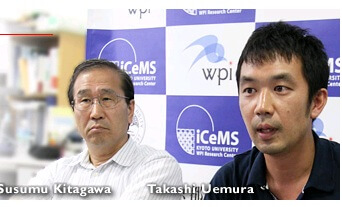Scientists from Kyoto University in Japan were able to demonstrate how to detect the composition of substances in the atmosphere using a polymer that changes its shape depending on changes in the environment

Detecting certain gases in the air is possible using several existing methods, but usually each of these methods suffers from one or more disadvantages, including high energy cost, cumbersome instrumentation, low detection rate and sensitivity to humidity.
A research team from Kyoto University in Japan was able to overcome these shortcomings by using a unique approach utilizing a cheap innovative material capable of quickly and accurately locating a defined gas in a variety of conditions. Moreover, beyond being reusable, the new compound emits varying levels of visible light in response to varying gas concentrations, an ability that allows the development of easy-to-use detection devices.
The findings, recently published in the scientific journal Nature Materials, describe the use of a flexible crystalline material (porous coordination polymer, PCP) that changes its configuration depending on the changes occurring in the environment. When a molecule that emits fluorescence (distyrylbenzene, DSB) is added to this compound, the combined composition becomes selectively sensitive to carbon dioxide gas while radiating with variable intensities depending on the gas concentrations.
"The real test for us was to see if the combined composition could differentiate between carbon dioxide and acetylene, both of which have similar physico-chemical properties," explains Professor Takashi Uemura. "Our findings clearly show that a PCP-DSB type combination reacts very differently to the two gases, allowing for the accurate detection of carbon dioxide in a variety of applications."
In its original configuration, the substance DSB is a flat and long molecule that emits blue light. When this material integrates into the PCP skeleton, the DSB material twists, which causes the deformation of the entire integrated structure. In this configuration, the radiation of the material is significantly reduced.
"On this occasion, we saw that the presence of the carbon dioxide gas causes the DSB molecules to switch to their flat form that emits bright light, and also to return to their original form," adds the lead researcher. "And more importantly, these steps are reversible and there are no significant changes in the composition, a fact that allows the development of a wide variety of selective, cheap and reusable gas detectors."
The news about the study

One response
very interesting.
Thanks for the article.